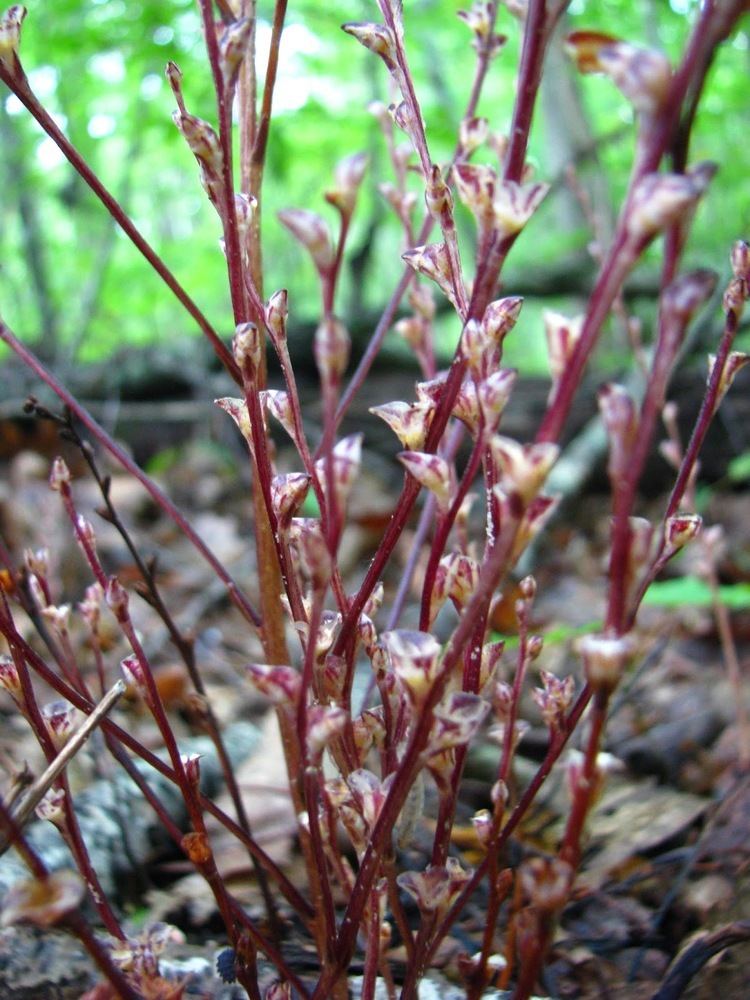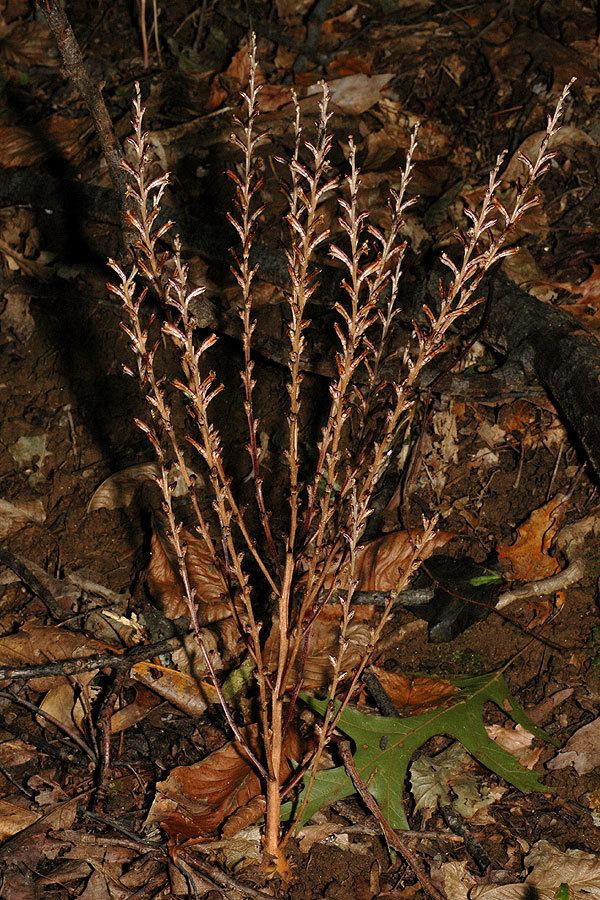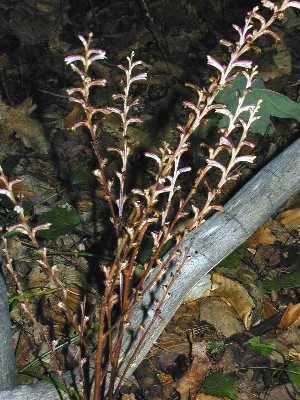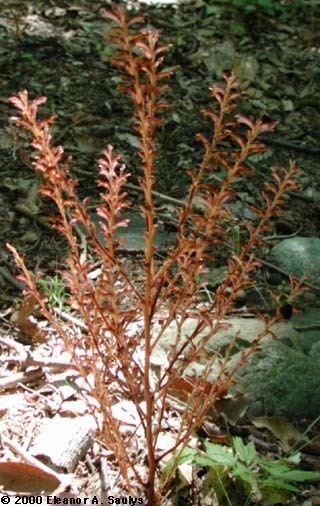Scientific name Epifagus virginiana | Species E. virginiana Rank Genus | |
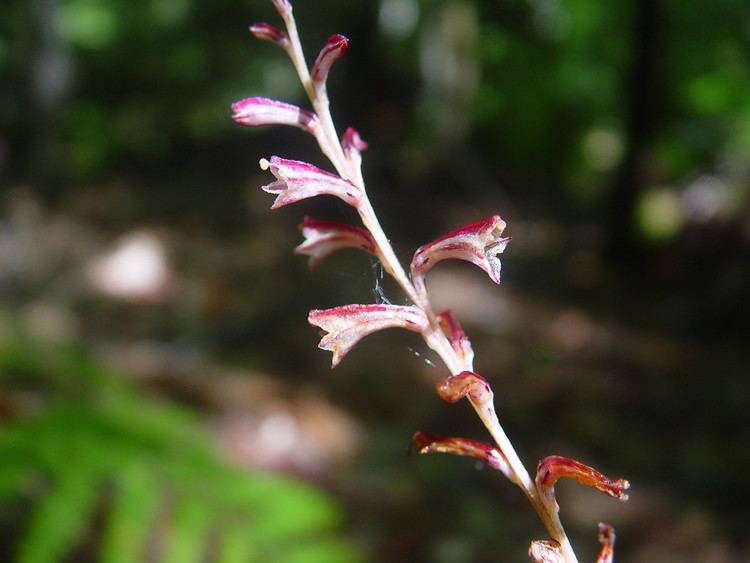 | ||
Similar Conopholis, Conopholis americana, Boschniakia, Orobanchaceae, Hyobanche | ||
Developmental stages of beechdrops epifagus virginiana
Epifagus virginiana — commonly called beech drops (or beech-drops, or beechdrops) — is an obligate parasitic plant which grows and subsists on the roots of American beech. It is a member of the broomrape family. Epifagus is monotypic—containing only E. virginiana. The name Epifagus derives from Greek "epi" meaning "on" or "upon", and "Fagus" which is the genus name of beech.
Contents
- Developmental stages of beechdrops epifagus virginiana
- Epifagus virginiana fungi kingdom
- Description
- Parasitism
- Pollination
- References

Epifagus virginiana fungi kingdom
Description
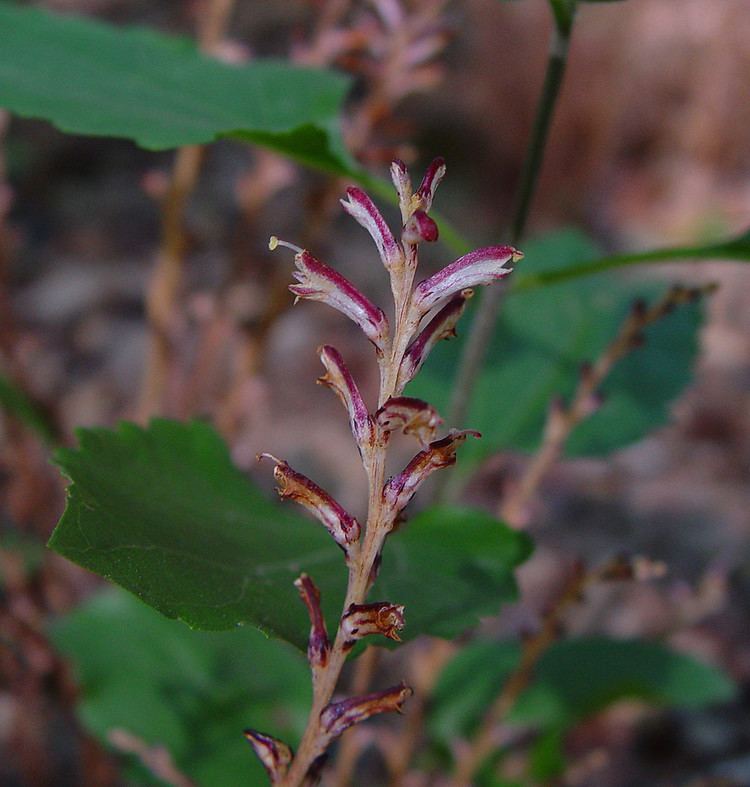
Beechdrops is an annual plant native to eastern North America. It entirely lacks chlorophyll and produces many brown stems up to 30 cm tall on which it bears small white and purple flowers that appear in July through October. The flowers have tubular, zygomorphic, corollas ~8mm long containing a single syle and four stamens. The dried flower stalks will persist throughout the winter. The flowers on the lower parts of the plant are cleistogamous (self-pollinating) while the tops of the stems have chasmogamous (cross-pollinating) flowers which may be sterile.
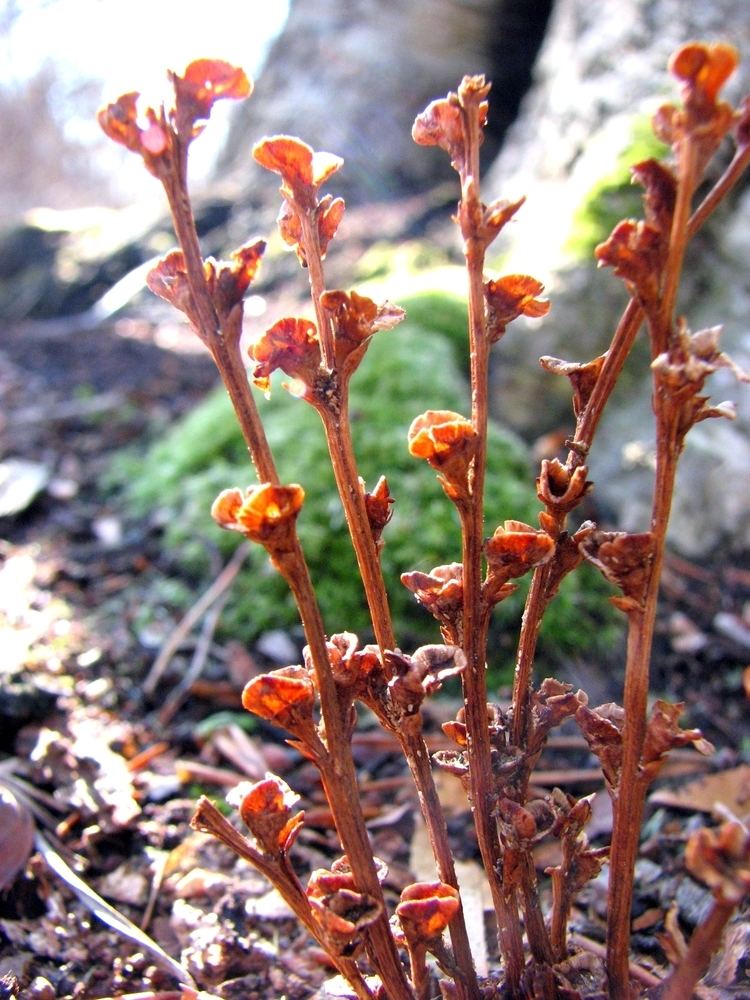
Beechdrops does contain very small alternate, scale like leaves, which are a vestigial structure from a common ancestor which was photosynthetic.
Parasitism
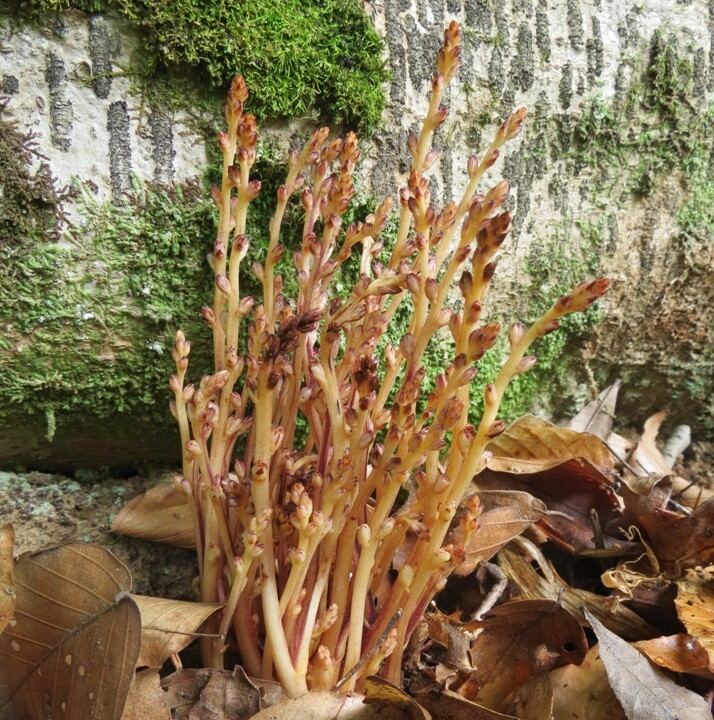
Beechdrops parasitizes beech roots using a structure called a haustorium which collects all the nutrients that the plant uses in its life functions. It is not believed that the plant significantly harms beech trees.
Pollination
Prenolepis imparis, a species of ant, is known to pollinate beechdrops.
